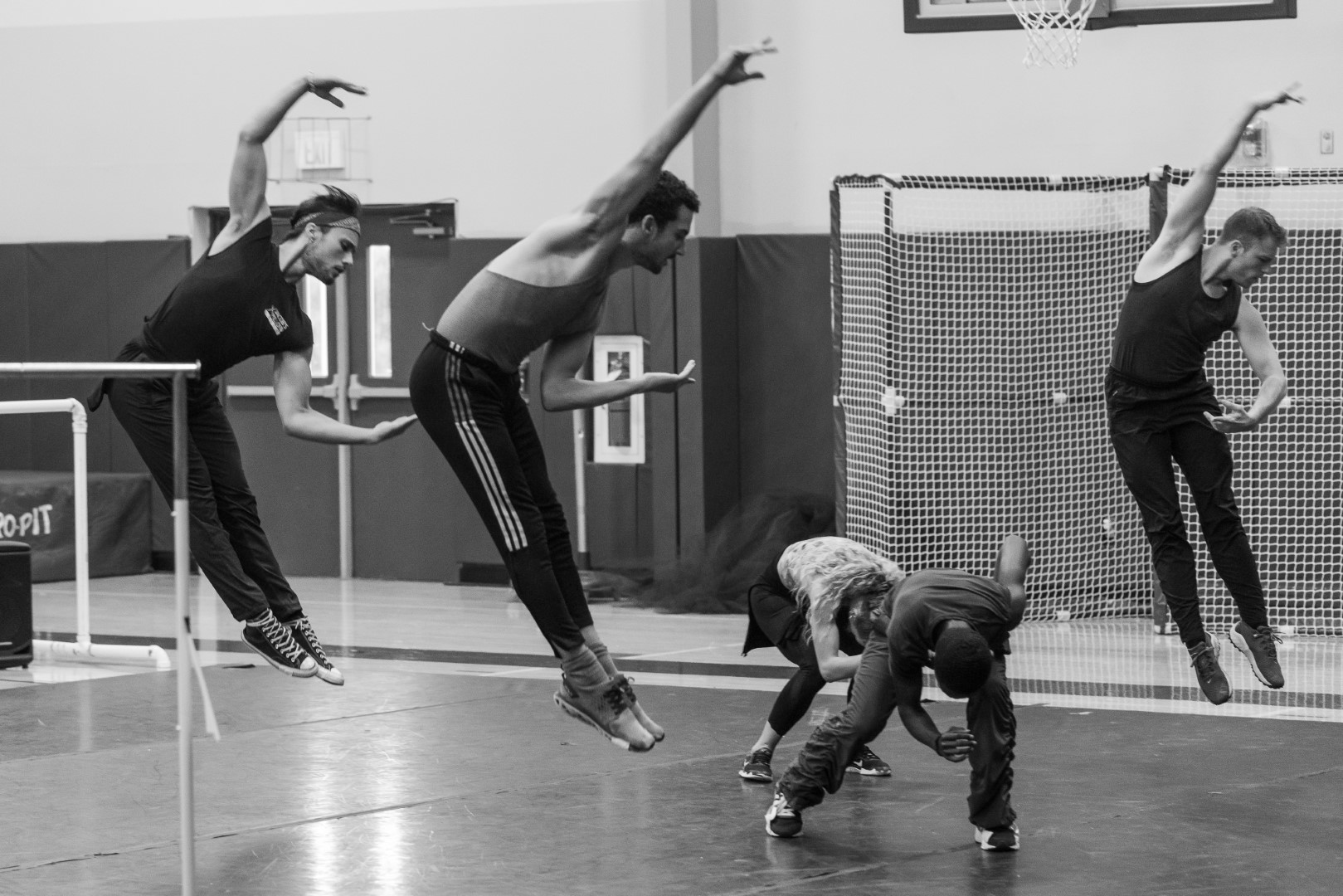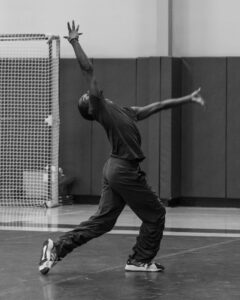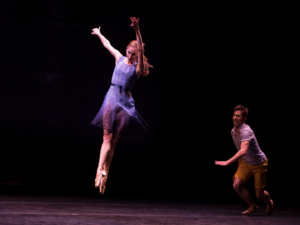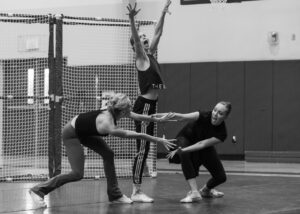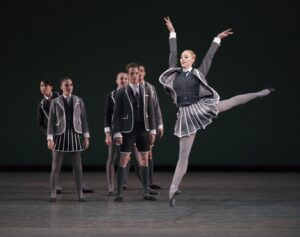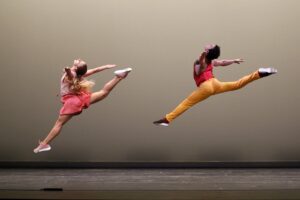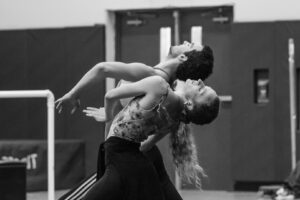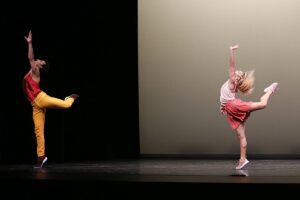BalletCollective, a small but mighty company, is becoming a unique influence in the ballet world. Founded in 2010 by the respected, quick-silver New York City Ballet soloist, Troy Schumacher, BalletCollective has come to the attention of dance enthusiasts by projecting an informal vitality, displaying an expanded appetite for experimentation, and expressing views of an inclusive contemporary society while nodding to formalism. These characteristics are evident in Schumacher’s current offering.
The Night Falls is an opera ballet close to the heart of Broadway that Schumacher and his collaborators have been developing since 2019. The work is scheduled to premiere in 2022, or possibly later. As has been the case with previous collaborations, Schumacher enlists the highest caliber of artist on whom the dance will be based. “In everyone I collaborate with, I am looking for people with strong, unique artistic visions who are also willing to receive and give interdisciplinary feedback.” In this work, Karen Russell, author of Swamplandia! and Pulitzer Prize finalist, acts as The Night Falls magical realist librettist while Ellis Ludwig-Leone, founder of San Fermin, composes the singular songs that narrate Russell’s myth.
Based on a pandemic version of the Greek Myth of the Sirens, the excellent Ludwig-Leone produces rough compositional sketches. Schumacher then begins choreographing. The three continue to shape the content. Describes Ludwig-Leone, “It’s like a game of telephone – artist, music, dance. Through this process I have found different modes of writing music that you wouldn’t come up with otherwise.”
Russell’s interpretation takes place in a Floridian grotto (“sunlight on green water”) where people from around the world converge after hearing the haunting siren song in their dreams. Slowly, they discover one another and build a community of protection. By relying on each other, they break free from this enchanting yet nightmarish melody. Russell, known for themes of dystopia, says, “Things are enriched by collaborators, their sensibilities and mediums… pushing us all out of our comfort zone. I feel much more opened up to collaboration. The dance is thrilling, and Ellis knocked it out of the park.”
In these latest excerpts of The Night Falls, Schumacher choreographs a kitschy, charming mermaid-like trio for Jacqueline Bologna, Kellie Drobnick and Adriana Pierce to Ludwig-Leone’s “Will you come to us, Come to Florida?” Two arresting and contrasting solos are memorable, one for Amari Frazier, the central character and a superb dancer, who jumps open chested in arabesque, arms flung back (‘I think they want me dead, strange creatures, never ends”); and the other for Drobnick, an appealing, willowy mover, who repeats an open hand to the ground, soft pound of the fist gesture. A section of thumping group work builds but generally the group sections are of a similar energy. The company also includes Alessio Crognale; William Geary, Marzia Memoli ; and Lorenzo Pagano.
How has contemporary ballet coming to pass? Unlike modern dance which questioned mores from its founding around the turn of the 20th century, classical ballet, introduced by Louis IV, has adhered to strict tradition developed over centuries where even a finger out of line can cause palpitations.
Enter Schumacher, who, while dancing the formal vocabulary of the great choreographer and co-founder of NYCB, George Balanchine, is willing to explore and express the world in which he lives: same sex partnering, a man in arabesque supported by a woman, a company of dancers from many backgrounds. He explains, “I try to learn from dance’s past and find new, compelling ways forward. I don’t think there are many situations where you can consciously choreograph the same type of ballet Balanchine would. The world has changed.”
We are not talking far from the grid, however. The superb dancers in The Night Falls from NYCB, Martha Graham Dance Company, Twyla Tharp Dance, West Side Story on Broadway, Cirque du Soleil, Queer the Ballet, and Juilliard are long and lean, rather than varied body types, and the dances themselves retain a measured sense of decorum. One longs to see Schumacher get messy. However, there is a willingness to embrace differences and explore new territory.
Says Schumacher, “It helps me to look at the dancers not just as a group doing choreography, but as people. I highly prize individualism.” Teresa Reichlen, NYCB principal dancer and an early member of BalletCollective says, “When Troy is dancing you see his personality. He tries to make the dancers look like people, not princes and princesses. He helped me let down my ballerina persona and to become more vulnerable.” Lorenzo Pagano, “Troy is very good at celebrating the differences and showcasing the strengths of the dancers.”
Ashley Laracey, NYCB soloist, the wife of Schumacher and mother of their twin daughters, clarifies, “When Troy’s creating new movement on me it can be difficult. He tends to push me in the directions I don’t enjoy. He says that he made it on me and knows I can do it. He believes in me a thousand times more than I do.” Pagano states, “Troy’s calm, no pressure, won’t throw a fit, professional, nice. He works in a very smooth and enjoyable way.” Claire Mann, Board Member says, “Troy is so open to ideas. The Night Falls is so out of the ballet box. His vision keeps expanding and has become more interesting and creative.”
Without exception, Schumacher has been lauded in the press from The New York Times to Dance Magazine, by his collaborators, and by his supporters. It is clear that the working environment is productive and artists respect and enjoy one another. This appreciation is reflected in Schumacher’s oeuvre of work that can be described as sophisticated, ardent, and designed. Collaborators are equals who exchange and hone ideas to further expand the work’s premise. Excellence is the currency. In addition, Schumacher is supported by a dedicated and avid group of Millbrook, New York residents who have embraced and buoyed the company. Schumacher is poised to continue as a choreographer of note.
Please see the interview with Troy Schumacher online with Side of Culture
Catherine Tharin, former dancer with the Erick Hawkins Dance Company and former senior adjunct professor of dance at Iona College, recently completed 15 years as the influential curator and programmer of dance and performance at the 92nd Street Y. She is now an independent dance curator, choreographer, teacher, writer and dancer.

